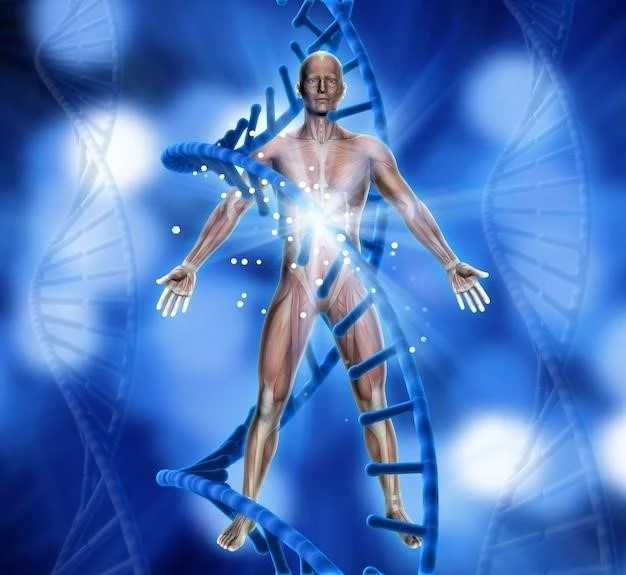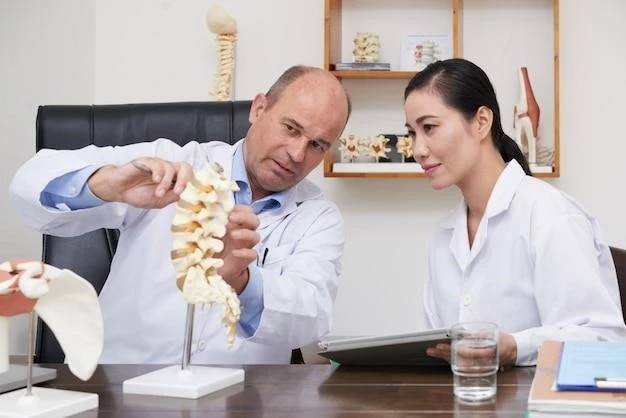Distal Myopathy ⎻ Understanding the Genetic Disorder and Managing Muscle Weakness
Distal myopathy is a genetic disorder characterized by muscle weakness‚ particularly in limb muscles. Understanding the disease’s progression and managing muscle weakness through physical therapy are crucial for patients’ quality of life.
Overview of Distal Myopathy
Distal myopathy is a genetic disorder that results in late-onset muscle weakness and wasting. It is characterized by the progressive weakness of limb muscles‚ particularly affecting the hands‚ feet‚ and lower legs. This condition is caused by an abnormal protein that leads to muscle degeneration over time. Individuals may experience muscle atrophy‚ where the muscles decrease in size and strength.
To diagnose distal myopathy‚ genetic testing and muscle biopsy are commonly performed. Symptoms may include difficulty swallowing‚ breathing problems‚ and even heart issues as the disease progresses. Patients may also have weakness in their hands‚ making daily tasks challenging. Treatment often involves physical therapy to help manage muscle weakness and maintain function as much as possible.
Understanding Muscle Wasting and Atrophy in Distal Myopathy
Muscle wasting and atrophy are common characteristics of distal myopathy. The abnormal protein associated with this genetic disorder leads to muscle degeneration and loss of muscle mass over time. As a result‚ individuals with distal myopathy experience progressive weakness in their limb muscles‚ making daily activities challenging.
It is important to understand that muscle wasting in distal myopathy is not reversible; however‚ strategies like physical therapy can help maintain muscle strength and function. Strengthening exercises‚ stretching‚ and low-impact aerobic activities may be beneficial in managing muscle weakness and preventing further atrophy. Working with a physical therapist can also help individuals adapt to changes in muscle strength and function.
Symptoms and Manifestations of Distal Myopathy
Distal myopathy presents with a variety of symptoms and manifestations that impact muscle function and overall health. Patients may initially notice weakness in their hands‚ making tasks like gripping or lifting difficult. As the condition progresses‚ individuals may also experience weakness in their feet and lower legs‚ affecting balance and mobility.
In addition to muscle weakness‚ distal myopathy can manifest in other ways‚ such as difficulty swallowing due to muscle involvement in the throat. Breathing problems may also occur as respiratory muscles weaken. It is essential to monitor heart health‚ as some individuals may develop heart problems associated with muscle degeneration.
If you or a loved one experience any of these symptoms‚ it is crucial to seek medical advice for proper diagnosis and management. Early intervention and a comprehensive treatment plan that may include physical therapy can help improve quality of life and slow the progression of muscle weakness.
Diagnosis and Medical Interventions
Diagnosing distal myopathy often involves a combination of genetic testing and muscle biopsy to confirm the presence of the abnormal protein associated with the condition. Medical professionals may also perform electromyography to assess the function of motor neurons and identify muscle degeneration.
Once diagnosed‚ medical interventions for distal myopathy focus on managing symptoms and slowing disease progression. Treatment may involve medications to address specific symptoms like muscle pain or stiffness. Physicians may also recommend physical therapy to help maintain muscle strength‚ flexibility‚ and range of motion.
Regular monitoring and follow-up appointments are essential to track the progression of the disease and adjust treatment strategies as needed. In some cases‚ assistive devices like braces or splints may be recommended to support weakened muscles and improve function. Collaborating with a multidisciplinary healthcare team can help individuals with distal myopathy manage their condition effectively.
Managing Muscle Weakness through Physical Therapy
Physical therapy plays a crucial role in managing muscle weakness associated with distal myopathy. A qualified physical therapist can design a personalized exercise program tailored to the individual’s needs and abilities. These exercises aim to improve muscle strength‚ flexibility‚ and endurance‚ helping maintain functional independence.
Stretching exercises can help prevent muscle stiffness and contractures‚ common issues in distal myopathy. Strengthening exercises target specific muscle groups to enhance overall strength and support joint stability. Low-impact aerobic activities like cycling or swimming can improve cardiovascular health without overstressing weakened muscles.
Physical therapists can also educate patients on proper body mechanics and energy conservation techniques to optimize daily activities and reduce strain on muscles. Assistive devices like canes or walkers may be recommended to enhance mobility and safety. Consistent participation in physical therapy sessions is essential for maximizing the benefits of exercise and maintaining quality of life.
Prognosis and Lifestyle Adjustments for Distal Myopathy Patients
The prognosis for distal myopathy varies depending on the individual’s specific genetic subtype‚ disease progression‚ and overall health. While there is no cure for the condition‚ early diagnosis and proactive management can help slow the progression of muscle weakness and improve quality of life.

Lifestyle adjustments are essential for individuals living with distal myopathy. It is important to prioritize regular exercise as prescribed by a physical therapist to maintain muscle strength and flexibility. Adapting the living environment to accommodate mobility challenges‚ such as installing grab bars or ramps‚ can enhance safety and independence.
Emotional and social support are also crucial for patients coping with distal myopathy. Joining support groups or seeking counseling can provide valuable resources for managing the emotional impact of the disease. Maintaining a healthy diet and staying engaged in activities that bring joy and fulfillment can contribute to overall well-being.
By working closely with healthcare providers‚ following a comprehensive treatment plan‚ and making necessary lifestyle adjustments‚ individuals with distal myopathy can lead fulfilling lives while effectively managing their symptoms and maximizing their quality of life.
